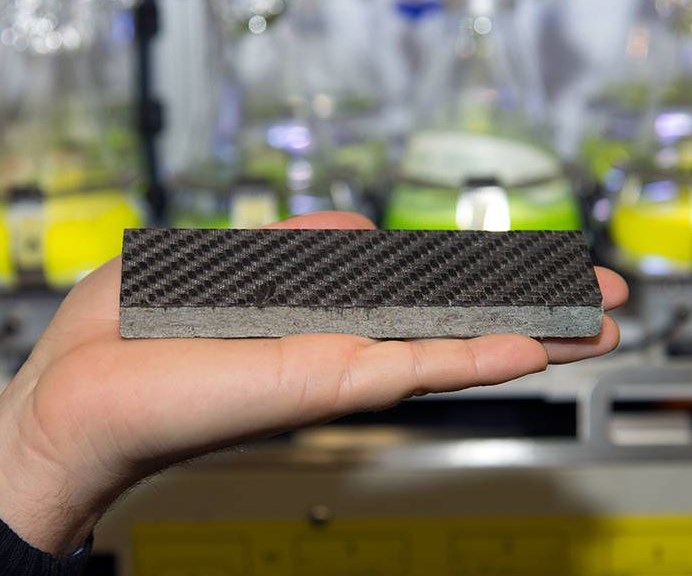Technical University of Munich researchers explore using algae to make carbon fiber
The process uses algae to convert CO2 from the atmosphere and manufacturing exhaust into algae oil, which is then used to produce polyacrylonitrile (PAN) carbon fiber precursor.

Source | Technical University of Munich
Technical University of Munich (TUM, Munich, Germany) researchers have been working to develop a process that uses halophilic algae, algae that thrive in high salt concentrations, to remove CO2 from the atmosphere and subsequently to make carbon fiber.
According to Thomas Brück, who heads the project along with a team at the Algae Cultivation Center of the Technical University of Munich, the process converts atmospheric CO2 into biomass, an organic material used as a renewable energy source, and, in a subsequent stage, algae oil. The algae oil is produced by a nutrient depletion phase where nitrogen is limited in the cultivation medium, triggering the accumulation of lipids.
“We then hydrolyze the algae oil so that we actually split the free fatty acids from the glycerol backbone,” explains Brück. The fatty acids are then used to generate biofuels, chemicals for the lubricant industry or thermoplastics, he says. The remaining glycerol residue is turned into acrylonitrile, which is polymerized to yield polyacrylonitrile (PAN), the precursor for approximately 90% of today’s carbon fiber production.
While the PAN precursor can be pyrolized via standard means, TUM has also developed a pyrolysis process that carbonizes the PAN fibers using parabolic solar reflectors — curved solar mirrors — in order to yield carbon fibers in a CO2 neutral manner.
“We do the pyrolysis in focused glass tubes in the center of those mirrors,” says Brück. “There you can actually generate temperatures up to 3,000ºC, and with that technology, you’re completely emission-free and also cheaper because you’re using sunlight.”
According to Brück, the carbon fiber created using the algae-based PAN has the same chemical composition as classical carbon fibers currently in use today and the same physical properties as those carbon fibers that come from petroleum resources.
“And since we can combine the thermoplastics that we generate from the fatty acid part with the carbon fiber, we can actually now do 3D printable carbon fiber composites,” says Brück. TUM is also currently working with a partner to develop CO2 negative building materials such as carbon fiber composite-reinforced granite from the algae-based carbon fiber.
Related Content
-
Paris Air Show 2023 highlights
The Paris Air Show, one of the largest aerospace trade shows in the world, returned for the first time since 2019 and proved that the global aviation industry industry is very much alive and kicking.
-
Ford Mustang Dark Horse features Carbon Revolution carbon fiber wheels
The 19-inch, five-spoke Dark Horse wheels feature signature blue carbon fiber detailing, keeping with the blue accents throughout the vehicle’s interior and exterior.
-
Overair's Butterfly eVTOL prototype to integrate composites-intensive design
Aiming for first flight tests in the latter half of 2023, Overair’s Butterfly aircraft uses Toray carbon fiber/epoxy prepreg strategically to cut weight on its battery-powered, quiet aircraft.

.png;width=70;height=70;mode=crop)














